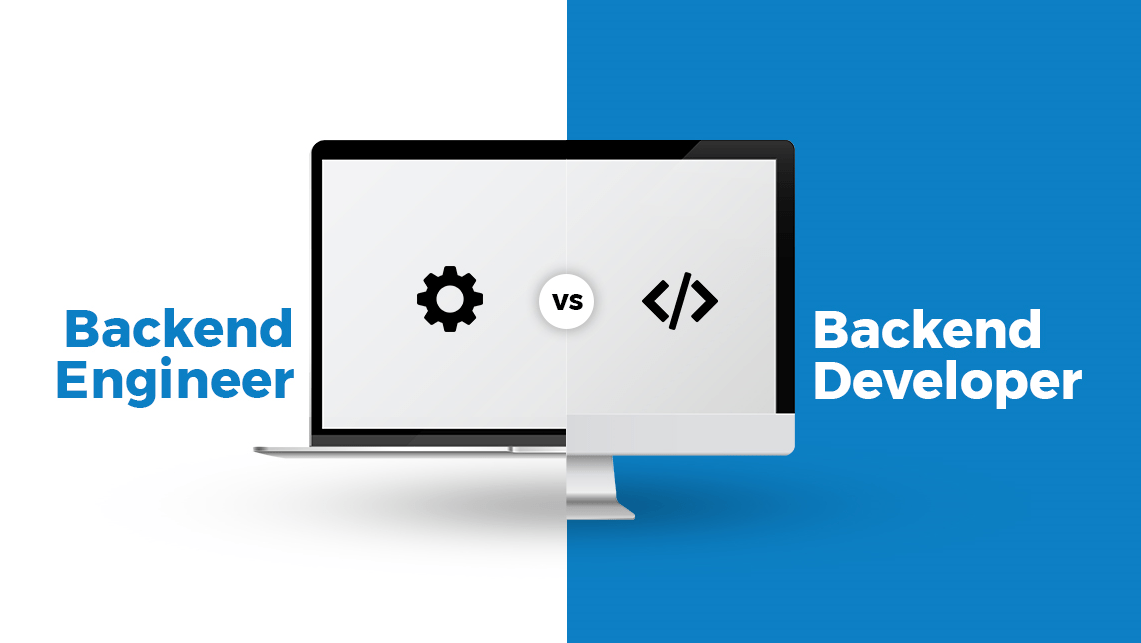
Backend Engineer vs Backend Developer: Who Should You Choose?
Backend development is a critical component of software development. It refers to the part of the software that is responsible for handling the processing and storage of data, as well as communicating with the frontend of the application.
It provides the underlying foundation that allows the frontend of the application to function. Backend development solutions play a key role in ensuring that the software system is scalable and secure with optimal performance.
For example, Netflix uses a complex backend system to store and deliver its vast library of movies and TV shows to millions of users worldwide. The backend handles tasks such as content management, user authentication, and recommendation algorithms.
Hence, backend development professionals have always been in high demand as they have a significant influence over the success of the software product.
However, with all the interconnected roles and responsibilities, people often get confused between backend engineers and backend developers. Although they both are a part of the project and might end up doing similar tasks, their profiles are largely different from each other,
If you are planning to hire backend experts for your organization, this article will help you understand the difference between a backend engineer vs. backend developer so that you can hire the right one for your development project.
Keep reading!
Who is a Backend Engineer?
A backend engineer is a type of software engineer who specializes in creating and maintaining the server-side of any app. They are responsible for developing the underlying architecture and infrastructure that supports the frontend of a web application.
Backend engineers typically design the entire backend architecture of the application and determine how the components will interact with each other for seamless functionality. They also collaborate with frontend developers to ensure that the application’s server-side functions are properly integrated with the user interface.
Some of the specific responsibilities of a backend engineer include designing and building application logic, optimizing application performance, implementing security measures to protect user data, and integrating third-party services and APIs. Therefore, the role of a backend engineer is crucial in ensuring that web applications function smoothly and provide a seamless user experience.
What Does a Backend Engineer Do? Key Roles and Responsibilities
A backend engineer is responsible for designing, developing, and maintaining the server-side components of an application or website. The main responsibilities of a backend engineer include:
- Designing and developing backend systems
Backend engineers must design and develop server-side systems that can handle a large number of users and requests. This requires an understanding of database design, data structures, algorithms, and server-side programming languages.
- Building APIs
Building APIs that allow the frontend of an application or website to communicate with the backend is another task of backend engineers. This includes designing and developing RESTful APIs, managing error handling and data validation, and implementing authorization and authentication methods.
- Managing databases
Backend engineers are also responsible for managing databases and ensuring that they are efficient, secure, and scalable. This includes designing database schemas, writing SQL queries, and optimizing database performance.
- Writing server-side code
Backend engineers write server-side code using languages such as Java, Python, Ruby, or Node.js. This code runs on the server and handles requests from the frontend, communicates with the database, and performs any necessary calculations or data processing.
- Ensuring security and scalability
It is important for backend engineers to ensure that the application or website is secure and scalable. This includes implementing security measures such as encryption, managing user access control, and monitoring the application’s performance and scalability.
Who is a Backend Developer?
A backend developer is a software developer who specializes in the server-side development of applications, databases, and other software systems. They work on the “behind the scenes” functionality that powers the user interface and handles the processing of data.
Backend developers typically work with programming languages such as Java, Python, Ruby, or PHP to write code that communicates with databases, manages server-side requests, and performs other critical functions. They also work with frameworks, libraries, and other tools to streamline the development process and improve the performance and scalability of their applications.
In addition to technical skills, backend development services experts also need to have a good understanding of system architecture, database design, and security protocols to ensure that their applications are reliable, efficient, and secure.
What Does a Backend Developer Do? Key Roles and Responsibilities
Backend developers work closely with frontend developers, database administrators, and system administrators to ensure that the apps are functional, secure, and efficient. Here are some of the key roles and responsibilities of a backend developer:
- Design and develop server-side logic
Backend developers are chiefly responsible for designing and implementing the code that runs on the server-side of an application. They develop APIs, web services, and other server-side components that allow the frontend of the application to interact with the backend.
- Manage server-side scripting languages
They also manage server-side scripting languages such as Python, Ruby, or PHP. Hire Backend developers to write and maintain code in these languages to create server-side functionality.
- Ensure application security
Ensuring that applications are entirely secure falls under the purview of backend developers. They implement security features such as encryption, user authentication, and access control.
- Collaborate with other developers
Backend developers work closely with frontend developers, database administrators, and system administrators to ensure that web applications are functional, efficient, and secure. They collaborate with other developers to ensure that the frontend and backend of web applications work together seamlessly.
- Troubleshoot issues
Backend developers must troubleshoot issues with web applications. They identify and fix bugs, optimize performance, and ensure that the system is running as expected.
- Stay up to date with new technologies
To stay up to date with new technologies, programming languages, and tools is one of the main objectives of a backend developer. They must constantly learn and adapt to new trends and technologies to ensure that web applications are efficient and secure.
Backend Engineers vs. Backend Developers: What are the Differences?
The terms “backend engineer” and “backend developer” are often used interchangeably, and the specific roles and responsibilities can vary depending on the context and the company. However, there are some general differences between these two roles:
Education and Experience
Generally, a backend engineer should have a formal education in computer science or a related field, along with several years of experience.
A backend developer, on the other hand, may have a less formal education and less experience, but still, have the technical skills necessary to build and maintain backend systems.
Team Role
An engineer may be part of a team that includes other engineers, as well as project managers, product managers, and other stakeholders. They may be responsible for leading the technical aspects of a project, collaborating with other team members, and communicating technical concepts to non-technical stakeholders.
A developer may be part of a smaller team or may work more independently, focusing primarily on implementing code.
Technical Focus
Backend engineers may be more focused on the overall architecture and design of a backend system, as well as the scalability, reliability, and security of the system.
Backend developers might be more focused on writing code that implements specific features or functionality within the system.
Ultimately, the differences between a backend engineer and a backend developer will depend on the firm and the defined roles and responsibilities of each position. In some cases, the terms may be used interchangeably or may be defined differently depending on the backend development company.
Final Thoughts
Although the roles of backend engineers and backend developers seem almost similar from a surface-level view, they are individually different in their own ways. Both have a distinct set of tasks and things to take care of but together, they prepare the project roadmap, share changes and updates, and collaboratively work throughout the software development life cycle.
If you are wondering whom you should choose for your backend development project, it totally on your requirements. If you need to create the components and overall architecture of the application, you should hire a backend engineer.
And if you need to code and build the backend of your application, hire a backend developer.
I hope this article helps you know the true difference between backend engineers and backend developers and find the ideal candidate for your project!
















